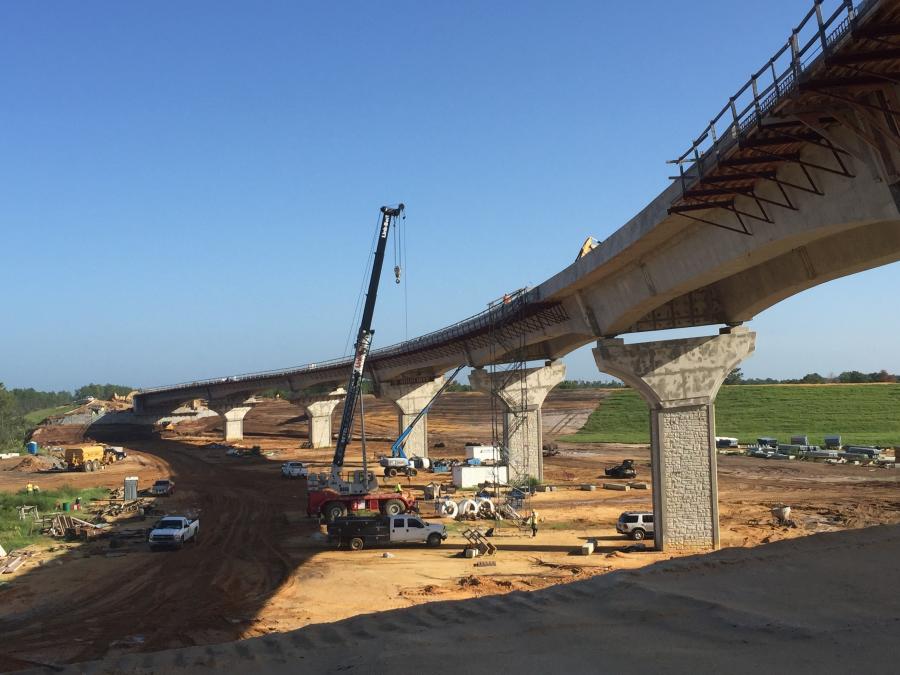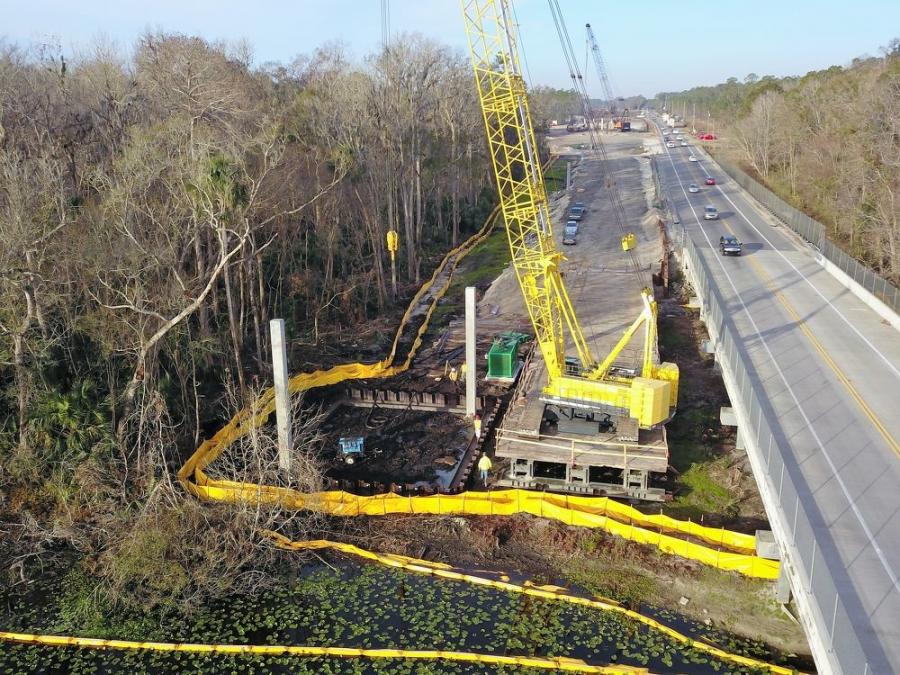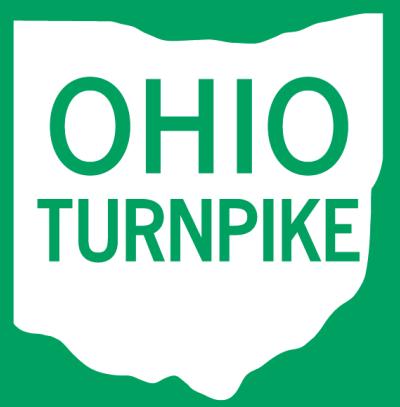The Central Florida Expressway Authority (CFX) and the Florida Department of Transportation (FDOT) are building the $1.6 billion Wekiva Parkway (SR429) in sections, with the entire road in Lake, Orange and Seminole counties expected to be open to traffic by early 2022.
Construction crews in three counties are continuing work on a 25-mi. toll road that will complete the beltway around Central Florida. The Central Florida Expressway Authority (CFX) and the Florida Department of Transportation (FDOT) are building the $1.6 billion Wekiva Parkway (SR429) in sections, with the entire road in Lake, Orange and Seminole counties expected to be open to traffic by early 2022.
 “The need to finish the beltway around Central Florida has been discussed for about 30 years,” said Mary Brooks, public involvement coordinator of the Wekiva Parkway for both CFX and FDOT. “Everyone knew a transportation solution was needed, but there were significant concerns about how to improve mobility, while preventing harm to the environmentally sensitive Wekiva River Basin. The Wekiva River is a designated National Wild and Scenic River and a Florida Outstanding Waterway, and is home to dozens of wildlife species and springs.
“The need to finish the beltway around Central Florida has been discussed for about 30 years,” said Mary Brooks, public involvement coordinator of the Wekiva Parkway for both CFX and FDOT. “Everyone knew a transportation solution was needed, but there were significant concerns about how to improve mobility, while preventing harm to the environmentally sensitive Wekiva River Basin. The Wekiva River is a designated National Wild and Scenic River and a Florida Outstanding Waterway, and is home to dozens of wildlife species and springs.
“Even before the first dirt was turned, an exhaustive amount of coordination was required with local, state and federal environmental agencies to be able to build the Wekiva Parkway through the Wekiva River Basin. That coordination has been ongoing, with proactive communication, reporting and field visits with the National Park Service, Florida Department of Environmental Protection, Wekiva Basin State Parks, Florida Fish and Wildlife Conservation Commission and the Florida Division of Forestry.”
In 2012, the Federal Highway Administration approved the parkway, which begins at the SR 429 (Daniel Webster Western Beltway) and SR 414 (John Land Apopka Expressway) interchange at US 441 in Apopka. It heads north and then east along the current SR 46 alignment in east Lake County and a portion of Seminole County, before dipping south to connect to SR 417 and Interstate 4 in Sanford.
The project includes widening SR 46 from west of US 441 in Mount Dora to east of Round Lake Road and in Sanford from west of Center Road to International Parkway. As recommended by the Lake County Commission, the Wekiva River Basin Commission and the Florida Department of Environmental Protection, the plans in east Lake County eliminate SR 46 as a through-road from the Neighborhood Lakes area eastward to the Wekiva River.
Based on financial analysis, it was decided the parkway would only be feasible to build and operate as a tolled facility. The Florida Turnpike Enterprise will operate the toll facilities on the FDOT sections. The parkway will feature all electronic tolling. Motorists will not need cash, meaning they will be able to pay without slowing down or stopping, maximizing traffic flow. FDOT reached out to community members for their input, as the design process got underway.
The five CFX sections of the parkway project at one time had as many as 500 workers on site, putting in long hours to move the project forward.
“CFX began construction on its sections, totaling 10 miles, in 2015,” said Brooks. “The Authority opened its first five miles from US 441 to Kelly Park Road in the Apopka area [northwest Orange County] in July 2017. We were expecting about 6,300 one-way trips per day, but have been getting 10,000-11,000 trips per day during the work week. That number is expected to climb once the agency opens its next five miles, connecting to State Road 46 in Lake County, in early April.
“FDOT began construction on its first three-mile section of the parkway in 2013. It opened from County Road 435 (Mount Plymouth Road) to State Road 46 in early 2016. CFX's new sections will connect with the FDOT section currently in use.”
The Wekiva Parkway is funded through the work programs of both CFX and FDOT. CFX obtained a federal TIFIA (Transportation Infrastructure Finance and Innovation Act) loan that allowed officials to accelerate several sections. FDOT has finished design on all but one of its sections, with more than 10 mi. of its share of the parkway currently under construction.
The design of CFX's last sections was finished in 2015, followed by right-of-way acquisition and permitting. In addition to completing Central Florida's beltway, the Wekiva Parkway (SR 429) will provide travel alternatives. The parkway also will relieve SR 46, US 441 and other area roads of traffic congestion resulting from intensifying growth and travel between Orange, Lake and Seminole counties. It's also expected to improve safety and reduce vehicle crash fatalities, especially on SR 46.
As for how motorists will benefit from the construction, Brooks said, “Northwest Orange County and Lake County have been some of the fastest growing areas in the region. The eight miles of parkway open so far already have cut people's commute times and eased congestion on local roads. The expressway connection to State Road 46 will provide even greater convenience to business and leisure travelers alike. The parkway also figures prominently in the economic development plans for several area municipalities.”
CFX's first five mi. of the Wekiva Parkway includes a 60-ft. tall bridge over a floodplain area with towering arches and stone relief that resembles a classic Roman aqueduct. Crews also had to dig out a tremendous amount of soil for a nearly mile-long depressed section. Fill from this area, where the parkway is about 20 ft. below ground, was used to elevate the parkway elsewhere, and also made the roadway less visible to adjacent residents. About 2.1 million cu. yds. of earth was excavated along the first stretch.
“Building the depressed section included tearing out the former Yothers Road and rebuilding it as a bridge featuring slightly arched, deep green bridge beams and other aesthetics,” said Brooks. “A similar bridge also was built at Belgian Street along this section. All told on this stretch, construction included building 18 bridge structures, including the ones at Kelly Park Road with 160-foot long variable depth steel box girders.
“Since the Wekiva Parkway features all electronic tolling for the greatest customer convenience and to keep traffic moving, toll gantries featuring the stone relief and an earthy color palette were built south of Ponkan Road,” said Brooks. “The stone relief throughout the project is treated with an eco stain done in multiple layers to give a more authentic appearance.
Equipment on site during construction includes cranes, dozers, backhoes and rollers. Some of the main materials being used are fill, RCP and concrete drainage structures, sheet pile, concrete production pile, MSE wall, silt fence, turbidity barrier, sod, asphalt, concrete bridge deck and box culvert bridge spans.
For CFX's full 10 mi. of parkway, crews were tasked with excavating 3.6 million cu. yds. of earth, while also building 8.4 million cu. yds. of embankment — enough to fill more than 40 large cruise ships. The work calls for a total of 58 lane mi. of new expressway and 40 mi. of foundation piles driven. Teams have labored to construct 40 new bridges, and will plant 440,000 sq. yds. of seed and mulch, while placing 2.3 million sq. yds. of sod totaling more than 400 football fields in length.
FDOT's 15 mi. of parkway is composed of Sections 4A, 4B, 6, 7A and 8. The other sections — 3A, 3B, 5, and 7B — are non-tolled improvements to assist traffic in getting to the parkway.
As teams near completion on Section 2 work, officials are making plans for the ribbon cutting this spring.
“Excitement has really been building since CFX opened the first section in July. Nearly everyone we hear from at festivals or community meetings, and especially online, is eager for Section 2 to connect to State Road 46,” said Brooks. “They know what a stress-free, time saver that's going to be, so it's great to be able to deliver such an amazing improvement to the community.”
Brooks noted that the development of the Wekiva Parkway has entailed a tremendous level of collaboration between FDOT and CFX.
“The agencies have worked exhaustively to honor the commitments during construction that were made in the early planning stages with regard to protecting the environment. They've also worked together to ensure a consistent look for the parkway that will create a source of pride.”
Regarding early site work involved for current CFX and FDOT section construction, said Brooks, “Prior to construction starting on each section, the Florida Fish and Wildlife Conservation Commission permits required that gopher tortoises be excavated and relocated to state licensed recipient sites. CFX and FDOT had moved about 800 gopher tortoises out of the way of construction by the end of 2017.”
Areas along the corridor have ranged from vacant land to former nurseries or residential properties, all of which had to be cleared. Right now, CFX work focuses on Sections 2A, 2B and 2C. CFX is finishing up bridge and embankment work, including final grading and sodding. Crews also are finishing installing overhead cantilever signs, paving and striping. Tasks related to 2A, 2B and 2C that have already been carried out include bridge structures, embankment, drainage, utility relocations and the bulk of the roadway work.
Regarding FDOT work on Sections 3A, 3B, 5 and 6, sections 3A and 3B involves a 3.8 mile project to widen State Road 46 to six lanes from U.S. 441 to Round Lake Road, and to also widen U.S. 441 to six lanes from the Orange-Lake County line to Natoma Boulevard.
Work includes converting the current U.S. 441 / S.R. 46 interchange into an at-grade, signalized intersection with a flyover ramp. The flyover ramp will allow continuous traffic flow for folks trying to get to the parkway. Improvements also include sidewalks, bike lanes and medians. Construction began at the end of October 2017 and is slated to finish in summer 2020.
Section 5 will relocate about a mile of County Road 46A out of the Seminole State Forest, thereby improving habitat connectivity and reducing the risk of conflicts between vehicles and wildlife. This was one of the environmental protections required in the 2004 Wekiva Parkway and Protection Act.
County Road 46A will be realigned 2.5 mi. from north of Arundel Way to connect to Section 4B of State Road 429, east of Camp Challenge Road. A portion of the new two-lane roadway will be built below ground, and a vegetative buffer will be included to minimize impacts to the adjacent community.
Work will include making a new signalized, T-intersection between the realigned C.R. 46A and S.R. 46. Construction also will involve road widening, installing medians, and building a trail along part of S.R. 46. Construction began in June of 2017 and should finish in 2019.
Section 6 is a design-build project that consists of more than six mi. of limited access toll road that will be largely elevated along the existing State Road 46 corridor from the State Road 429 interchange east of Camp Challenge Road to near Longwood-Markham Road. The project includes a parallel, non-tolled, service road for local travel, and a new, much higher bridge with a slightly arched design and other aesthetics over the Wekiva River.
Three bridges will be built over the river for the eastbound and westbound parkway lanes, and for the non-tolled service road. Environmental precautions will be taken when building the bridges over the Wekiva River, which is designated as a National Wild and Scenic River.
Along with the river bridge, three other wildlife bridges will allow animals to pass safely between the Seminole State Forest, Rock Springs Run State Reserve and Lower Wekiva River Preserve. The wildlife bridges will total nearly 7,700 feet in length, providing nearly 100 times the safe passageway for animals as the current two wildlife tunnels under S.R. 46 in this area. This section also will feature wildlife fencing to discourage animals from entering the corridor.
A multi-use trail will be included along the service road, with four scenic overlooks planned at the wildlife bridges. This section is expected to enhance access to the adjacent state conservation lands. Construction will include connector roads between remaining sections of County Road 46A and S.R. 46 to maintain private property access. Work also will include drainage, lighting at bridges over cross streets, utilities and other roadway features. Construction began in October of 2017 and should finish in 2021.
Section 7A will build 3.5 mi. of limited access toll road along the existing State Road 46 corridor from just west of Longwood-Markham Road to Orange Boulevard. The project will include non-tolled, parallel service roads for local travel, slip ramps to enter and exit the Wekiva Parkway, and several bridges over side streets.
Roundabouts are planned as safety enhancements at the intersections under the parkway. Lighting is planned under the bridges and on frontage road approaches to the roundabouts. A 10-foot-wide sidewalk is planned on the south side of the corridor.
Construction is scheduled to begin in April-May of 2018 and finish in 2022.
Brooks said communication has been an integral part of developing the parkway, with work affecting officials, business owners and residents across three cities and three counties.
“The agencies have worked diligently to push construction alerts about traffic impacts out to the community, especially now that 13 miles of the State Road 46 corridor soon will be under construction as part of the parkway work.”
Weather has been a factor during the most recent sections of construction, but hasn't had an overwhelming impact.
“Hurricane Irma's record-setting rainfall certainly slowed work at the time, but the projects have since recovered and gotten back on track,” said Brooks.
With a great deal of construction yet to take place, monitoring the progress requires both patience and commitment. The end goal, said Brooks, is worth the wait.
“The Wekiva Parkway is unique in that it provides much needed congestion relief and travel convenience, while helping to protect the natural resources surrounding the Wekiva River. The care and detail taken with the parkway's aesthetics are certain to make it one of the state's, and perhaps the country's, great signature parkways.”
CEG
Today's top stories






 “The need to finish the beltway around Central Florida has been discussed for about 30 years,” said Mary Brooks, public involvement coordinator of the Wekiva Parkway for both CFX and FDOT. “Everyone knew a transportation solution was needed, but there were significant concerns about how to improve mobility, while preventing harm to the environmentally sensitive Wekiva River Basin. The Wekiva River is a designated National Wild and Scenic River and a Florida Outstanding Waterway, and is home to dozens of wildlife species and springs.
“The need to finish the beltway around Central Florida has been discussed for about 30 years,” said Mary Brooks, public involvement coordinator of the Wekiva Parkway for both CFX and FDOT. “Everyone knew a transportation solution was needed, but there were significant concerns about how to improve mobility, while preventing harm to the environmentally sensitive Wekiva River Basin. The Wekiva River is a designated National Wild and Scenic River and a Florida Outstanding Waterway, and is home to dozens of wildlife species and springs.











